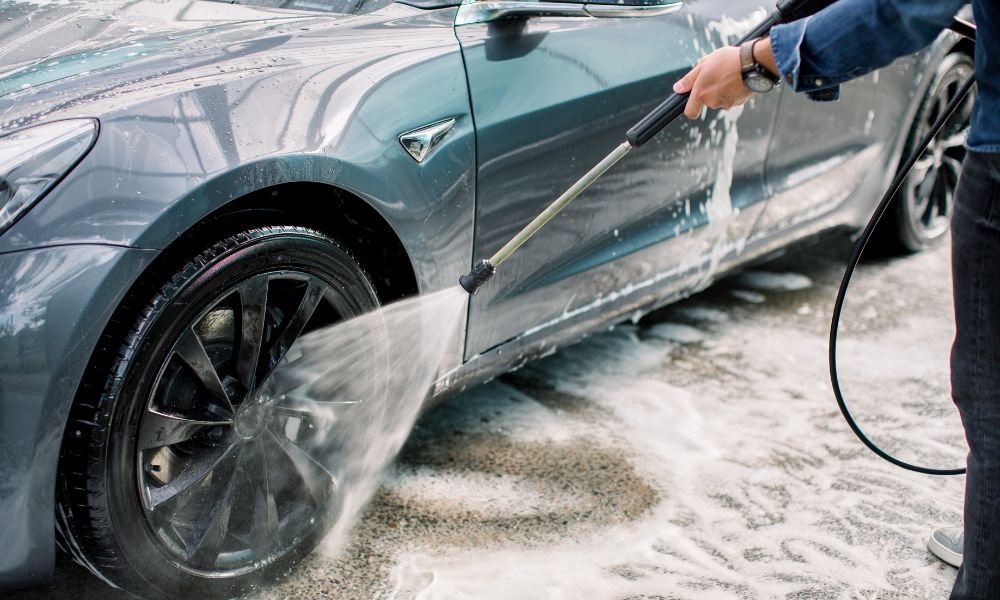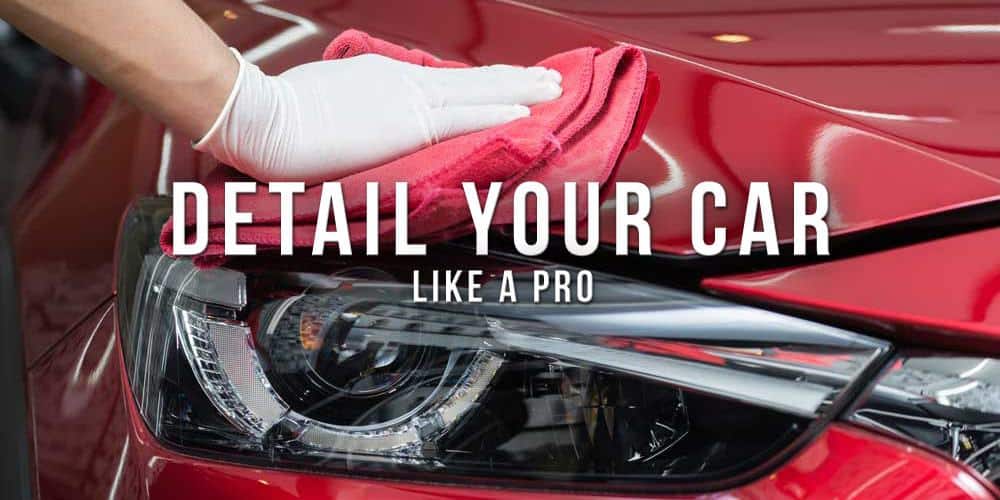A Comprehensive Guide to Ceramic Layer and Its Role in Auto Describing Quality
In the realm of car care and outlining, ceramic finish has actually become a game-changer. This cutting-edge application, a fluid polymer, creates a resilient, hydrophobic surface area that not just safeguards an automobile from ecological harm but also gives a striking high-gloss coating. This article intends to delve right into the scientific research behind ceramic finish, its many benefits, the application procedure, and succeeding maintenance suggestions - all contributing to car describing excellence.
Recognizing the Essentials of Ceramic Coating
While it may appear complex initially glimpse, the fundamentals of ceramic finish are fairly uncomplicated. Ceramic layer is a fluid polymer that is applied to the external surfaces of automobiles. This layer, which bonds chemically with the vehicle's factory paint, develops a layer of defense. It is renowned for its capacity to provide a glossy, premium finish that is not just cosmetically attractive but also resistant to a variety of possible damages, including scrapes and chips.
Its use is not limited to vehicles, as it can likewise be used to other surfaces, such as plastic, glass, and metal. The application process requires a certain degree of ability and precision and is normally carried out by specialists. This covering's sturdiness relies on several elements, consisting of the high quality of the item and the conditions it is exposed to. Generally, recognizing ceramic covering has to do with understanding its function, application, and advantages.
The Scientific Research Behind Ceramic Covering and Exactly How It Functions
Looking into the science behind ceramic finish, it comes to be apparent that its effectiveness is due to its unique chemical properties. The layer is made from a substance called silica dioxide, or SiO2, which creates a bond with the automobile's paint. This bond creates a semi-permanent, hard layer that protects the lorry's surface.
The nanotechnology included allows the ceramic particles to complete the min pores of the cars and truck paint, making the coated surface area hydrophobic, or water repellent. This suggests that water, dust, and other impurities can not stick to the surface, instead they grain up and roll off.
Additionally, the chemical framework of ceramic layer gives it a high heat resistance. This makes it more durable to the sun's UV rays and protects against the auto's paint from oxidizing and fading. Recognizing the science behind ceramic coating discloses just how this innovative modern technology supplies a superior level of protection for lorries.
Advantages of Applying Ceramic Coating to Your Lorry

Ceramic layer likewise boosts a vehicle's appearance. It imparts a high-gloss surface that amplifies the auto's shade and overall aesthetic appeals. This covering is hydrophobic, indicating it repels water, making it harder for dust and gunk to stay with the car's surface. Because of this, cleansing comes to be a less regular and easier job.
Last but not least, ceramic finishing is a sensible financial decision. It is a lasting investment that enhances an automobile's resale value by keeping its pristine condition and magnificent appearance. Unlike wax or sealer, ceramic layer does not need frequent reapplication, making it an economical remedy.

Step-by-Step Process of Using Ceramic Layer
Using ceramic coating is a precise process that demands mindful precision and attention to detail. It begins with a detailed cleaning of the vehicle's exterior to get rid of any kind of dust or crud. This makes certain a smooth surface for the finishing to comply with. The next action entails the usage of a clay bar to get rid of any kind of recurring contaminants, thus preparing the surface area for the application of the covering.
The actual ceramic coating application is done making use of a tiny, Homepage soft applicator pad. The finishing is used uniformly across the surface area, panel by panel, in a cross-hatch pattern. This approach makes certain total coverage and uniformity. As soon as used, the finishing is allowed to cure. This process can occupy to 24 hr.
This step-by-step procedure, while lengthy, is vital to achieving the visual and safety benefits of ceramic finish. It enhances the car's appearance, maintains its value, and guarantees its durability.
Preserving Your Automobile Message Ceramic Covering: Tips and Tricks
How does one make certain the preservation of a ceramic covering's shine and resilience? Post-application upkeep plays a critical role. Ensuring long life involves routine gentle cleaning with pH-neutral soaps that won't weaken the finishing. Preventing rough chemicals or rough rubbing tools is additionally vital.
It is suggested to dry the car extensively after washing to stop water spots, which can possibly damage the layer - Detail'd Luxury Detailing & Coatings. Routinely applying a leading coat sealer can additionally strengthen the coating's toughness and heighten the shiny effect
Nonetheless, the car needs to not reference be exposed to hefty rainfall or other extreme problems instantly after covering application. The finish needs time to treat correctly, normally around 48 to 72 hours.
Final Thought
To conclude, ceramic finish supplies an innovative method to boost a lorry's appearance while offering durable protection against ecological damages. It is an essential element of vehicle describing excellence that increases resale value and ensures long life. By recognizing the science, application process, and maintenance demands of ceramic layer, vehicle lovers can accomplish a level of detailing that really stands the examination of time.

Ceramic coating likewise great post to read improves an automobile's appearance.In final thought, ceramic finishing offers an ingenious method to enhance a car's appearance while giving robust protection versus ecological damages. By understanding the scientific research, application procedure, and maintenance requirements of ceramic coating, vehicle lovers can accomplish a level of detailing that really stands the test of time.